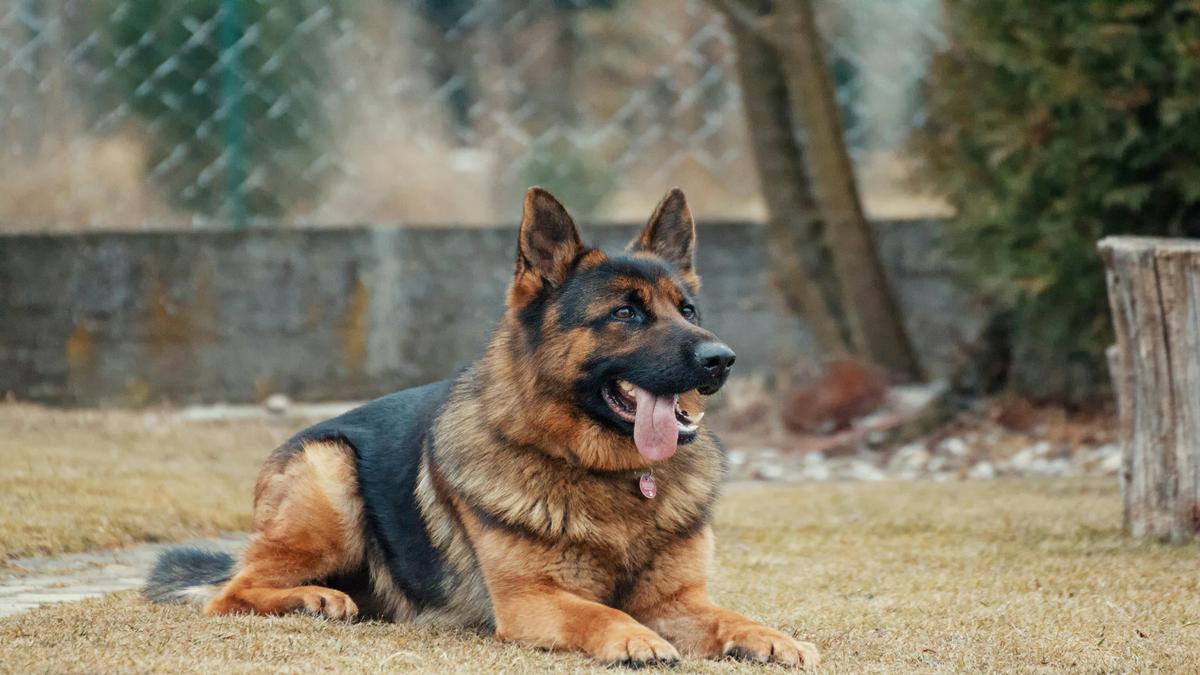Avoiding Contact: Fear, Insecurity, or Lack of Socialization can lead to misinterpretations in canine behavior. Understanding dog body language is crucial in deciphering their communication. To help you navigate these situations, we will delve into Canine Behavior Decoding Tips. Whether you are dealing with aggressive dogs or fearful canines, recognizing the signs and knowing how to approach them is key. Stay tuned for valuable insights on socialization and canine psychology to better understand our furry friends.
Key Takeaway
- Know your dog’s body language
- Avoid direct eye contact with unfamiliar dogs
- Respect their personal space
- Approach dogs calmly and slowly
- Pay attention to warning signs of aggression

Canine Behavior Decoding Tips
Understanding Dog Body Language
Dogs communicate primarily through body language, making it essential for pet owners to understand their furry friends’ cues. Body language is a crucial aspect of canine communication, and deciphering it can help you navigate the complexities of your dog’s emotions and needs. Here are some key body language signals to look out for:
| Body Language | Description |
|---|---|
| Tail Wagging | A common misconception is that all tail wagging indicates happiness. However, the speed and height of the wag can convey different emotions. A slow wag with a low tail may signal insecurity or fear. |
| Ears | The position of a dog’s ears can indicate its mood. Ears held back or flattened against the head may signify fear or submission, while perked ears show alertness or aggression. |
| Eye Contact | Direct eye contact can be seen as a challenge or threat in the dog world. A relaxed gaze or blinking eyes indicate comfort and trust. |
| Body Posture | A dog standing tall with a stiff body may be feeling confident or aggressive, while a lowered body or cowering stance indicates fear or submissiveness. |
| Mouth | Bared teeth or a wrinkled muzzle often signal aggression or defensiveness, while a relaxed, slightly open mouth indicates a calm and friendly demeanor. |
Deciphering Canine Communication
Interpreting your dog’s communication goes beyond just understanding body language. Dogs also use vocalizations, facial expressions, and scent to convey their feelings. Here are some additional cues to help you decode your canine companion’s messages:
- Vocalizations: Dogs bark, whine, growl, and howl to communicate. Each vocalization has its own meaning, such as barking to alert or warn, whining to express anxiety or need, and growling to show aggression or discomfort.
- Facial Expressions: Just like humans, dogs can express emotions through facial expressions. A relaxed face with soft eyes and a slightly open mouth typically indicates a content and relaxed dog. On the other hand, a tense face with narrowed eyes and a wrinkled muzzle may signal stress or aggression.
- Scent: Dogs have a keen sense of smell and use scent to communicate with other animals. They mark their territory with urine and use pheromones to convey information about their health, reproductive status, and emotions.
The importance of recognizing fear signals
One of the most crucial aspects of understanding your dog’s behavior is recognizing fear signals. Dogs can exhibit fear for various reasons, such as past trauma, lack of socialization, or feeling threatened in a particular situation. It’s essential to identify these fear signals early on to prevent escalating anxiety or aggression. Some common fear signals in dogs include:
- Trembling or shaking
- Excessive panting
- Avoidance behaviors
- Yawning or lip licking
- Pacing or restlessness
When you notice these fear signals in your dog, it’s vital to create a safe and reassuring environment to help them feel more secure. Avoid forcing them into situations that trigger fear and instead gradually introduce them to new experiences in a positive and supportive way. Seeking the guidance of a professional dog trainer or behaviorist can also be beneficial in addressing underlying fears and building your dog’s confidence.
Recognizing Fear of Dogs
Signs of Canine Insecurity
When it comes to recognizing fear in dogs, it’s essential to be attentive to their body language and behavior. Dogs communicate their emotions primarily through non-verbal cues, so being able to interpret these signs is crucial in understanding your furry friend better. Here are some common signs that indicate canine insecurity:
- Tail tucked between legs
- Ears pinned back
- Whale eye (when you see the whites of their eyes)
- Lip licking
- Yawning
- Avoiding eye contact
- Shaking or trembling
- Excessive panting
Understanding Fearful Canine Behavior
Fearful canine behavior can manifest in various ways, and it’s essential to approach these situations with patience and empathy. Dogs may exhibit aggression when they are fearful as a way to protect themselves, so it’s crucial to avoid triggering their fight or flight response. Understanding the root cause of their fear is the first step towards helping them overcome it.
Tips for approaching fearful dogs
| Tip | Description |
|---|---|
| Approach Slowly | Avoid sudden movements and give the dog space to feel comfortable. |
| Use Positive Reinforcement | Offer treats and praise to create a positive association. |
| Avoid Direct Eye Contact | Staring can be perceived as a threat, so look away or blink slowly. |
| Respect Their Boundaries | Allow the dog to approach you on their terms and avoid forcing interactions. |
| Seek Professional Help | If the fear is severe, consult a professional dog trainer or behaviorist for guidance. |
Avoiding Contact: Fear, Insecurity, or Lack of Socialization
Avoiding contact with dogs who exhibit signs of fear, insecurity, or lack of socialization is crucial to prevent escalating the situation. It’s important to respect their boundaries and create a safe environment for them to feel secure. By understanding the reasons behind their behavior, you can navigate interactions with them effectively.
Fear in dogs can stem from various factors, including past trauma, lack of socialization, or genetic predispositions. Insecurity may arise from uncertainty or anxiety, while a lack of socialization can lead to fear of unfamiliar situations or people. By acknowledging these differences, you can tailor your approach towards each individual dog’s needs.
Signs of Fear, Insecurity, or Lack of Socialization
Recognizing the signs of fear, insecurity, or lack of socialization in dogs is essential for promoting their well-being. Paying attention to their body language and behavior can provide insight into their emotional state. Here are some indicators to watch out for:
- Avoidance behavior
- Excessive barking or growling
- Cowering or hiding
- Pacing or restlessness
- Destructive behavior
- Excessive drooling
- Escaping or trying to flee
Interpreting these signs accurately can help you respond to the dog’s needs appropriately. By avoiding contact when the dog is displaying signs of fear, insecurity, or lack of socialization, you can prevent escalation and promote a positive interaction in the future.
Strategies for Avoiding Contact
When encountering a dog who is exhibiting signs of fear, insecurity, or lack of socialization, it’s crucial to approach the situation with caution and sensitivity. Here are some strategies to help you navigate these interactions effectively:
- Give the dog space: Allow the dog to move away if they feel uncomfortable.
- Avoid sudden movements: Move slowly and calmly to prevent startling the dog.
- Use calming signals: Avoid direct eye contact and offer soft verbal cues.
- Respect their boundaries: Do not force interactions and allow the dog to approach you voluntarily.
- Seek professional help: Consult a veterinarian or dog trainer if the behavior persists.
By implementing these strategies, you can create a safe environment for dogs who are experiencing fear, insecurity, or lack of socialization. Avoiding contact in these situations is vital to building trust and fostering a positive relationship with your canine companion.

Dealing with Aggressive Dogs
Understanding Dog Aggression
When it comes to aggressive behavior in dogs, it’s essential to understand that this can stem from various factors such as fear, insecurity, lack of socialization, or even underlying health issues. Dog aggression can manifest in different ways, including growling, snapping, lunging, or even biting. It’s crucial to decode your dog’s behavior to address the root cause of their aggression.
Tips for Handling Aggressive Canines
Handling an aggressive dog can be challenging, but with the right approach, you can help de-escalate their behavior and create a positive environment for both you and your furry friend. Here are some tips to help you navigate through this situation:
Techniques for de-escalating aggressive behavior
| Technique | Description |
|---|---|
| Stay Calm | Dogs can sense your emotions, so staying calm can help prevent escalating the situation. |
| Create Space | Give your dog space to calm down and avoid triggering their aggression further. |
| Avoid Punishment | Punishing an aggressive dog can make the situation worse. Instead, focus on positive reinforcement. |
| Seek Professional Help | If your dog’s aggression persists, consult a professional trainer or behaviorist for guidance. |
Remember, aggressive behavior in dogs is their way of communicating that they are uncomfortable or stressed. By understanding the root of their aggression and implementing positive techniques, you can help your furry companion overcome their challenges.
Avoiding Contact: Fear, Insecurity, or Lack of Socialization
Avoiding contact with an aggressive dog due to fear, insecurity, or lack of socialization is crucial for safety and prevention of escalating the situation. Just like humans, dogs have their boundaries and comfort levels that need to be respected.
Decoding Fear, Insecurity, or Lack of Socialization
Fear, insecurity, and lack of socialization can lead to aggressive behavior in dogs. It’s essential to decode these emotions to address the root cause of their behavior. Dogs may exhibit aggression as a defense mechanism when they feel threatened or vulnerable.
Strategies for Avoiding Contact
- Recognize Signs of Aggression: Be attentive to your dog’s body language and behavior to anticipate aggressive outbursts.
- Create Safe Spaces: Provide your dog with a designated area where they can retreat and feel secure.
- Limit Exposure to Triggers: Identify and avoid situations that trigger your dog’s aggression.
- Socialize Gradually: Introduce your dog to new environments and people slowly to build their confidence.
By navigating through your dog’s fear, insecurity, or lack of socialization with care and patience, you can help them overcome their challenges and foster a positive relationship.
Socialization and Canine Psychology
Importance of Canine Socialization
Socialization is crucial for dogs to develop into well-adjusted and confident companions. It involves exposing your furry friend to various people, animals, environments, and experiences in a positive and controlled manner. Proper canine socialization helps them learn how to interact appropriately with others and navigate the world around them.
Impact of Lack of Socialization
On the flip side, a lack of socialization can lead to fear, anxiety, and aggression in dogs. When they are not exposed to different stimuli during their critical developmental period, they may struggle to cope with new situations later in life. This can result in behavioral issues that are challenging to address.
How socialization affects canine behavior
Here is a table summarizing how socialization can impact canine behavior:
| Socialization | Canine Behavior |
|---|---|
| Adequate exposure to various stimuli | Confident and well-adjusted behavior |
| Positive interactions with people and animals | Friendly and sociable demeanor |
| Familiarity with different environments | Reduced anxiety and fearfulness |
| Controlled exposure to new experiences | Better coping mechanisms |
When dogs are properly socialized, they are more likely to exhibit positive behaviors and have a higher quality of life. It sets the foundation for a strong bond between you and your canine companion.
Avoiding Contact: Fear, Insecurity, or Lack of Socialization
Dogs that avoid contact may be exhibiting signs of fear, insecurity, or a lack of socialization. It’s essential to understand the root cause of this behavior to help your furry friend overcome their challenges. Here are some tips to help you decode and address this issue:
- Observe their body language: Dogs communicate through their body language. Signs of fear or insecurity may include tail tucking, ears pinned back, avoiding eye contact, or cowering. Pay attention to these cues to understand how your dog is feeling.
- Gradual exposure: If your dog is fearful or insecure, introduce them to new people, animals, or environments slowly and positively. Patience is key in helping them build confidence and trust in unfamiliar situations.
- Positive reinforcement: Use treats, praise, and affection to reward your dog when they exhibit calm and confident behavior. This will encourage them to engage with their surroundings positively.
- Professional help: If your dog’s avoidance of contact is severe or persistent, consider seeking guidance from a professional dog trainer or behaviorist. They can provide tailored strategies to address your dog’s specific needs.
- Create a safe space: Give your dog a designated area where they can retreat to when they feel overwhelmed. This safe space should be comforting and calm, allowing them to regain their composure.
By navigating the complexities of your dog’s behavior and addressing their fears and insecurities through positive and supportive methods, you can help them overcome their challenges and thrive in various situations.
Frequently asked questions
Why do some canines avoid contact with humans or other animals?
Canines may avoid contact due to fear, insecurity, or lack of socialization.
—
How can fear impact a canine’s behavior?
Fear can cause a canine to avoid contact with others, leading to defensive or aggressive behaviors.
—
What role does insecurity play in a canine’s reluctance to interact?
Insecurity can make a canine feel vulnerable, leading them to avoid contact to protect themselves.
—
How does lack of socialization contribute to a canine’s avoidance of contact?
Lack of socialization can result in a canine being unfamiliar or uncomfortable with interactions, causing them to avoid contact.
—
Is it possible to help canines overcome their avoidance of contact?
Yes, with patience, positive reinforcement, and gradual exposure, canines can learn to feel more comfortable and confident in social situations.

